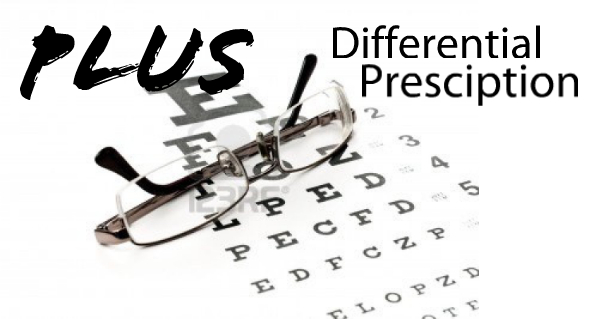
First, important note: I say this every so often and it bears repeating. If your child has sudden, or very high myopia, or convergence issues, or is very young (less than 2 years old) with notable visual deficiencies, please post in the forum before making any changes. Child eyes are still developing and all artificial focal planes, and focal plane changes need to be considered carefully!
The adult program outlines diopter changes very effectively (the timing also being important). With a child we always want to add an extra measure of patience and careful analysis. Adult eyes are susceptible to focal plane changes but to a lesser degree than still developing eyes. Avoid sudden changes, track progress carefully, and always ask if you’re not sure!
Correct lens selection depends to a great extent on the favored distance from the screen, and of course the child’s myopia degree (if any – prevention also should include a differential prescription for close-up work).
We will discuss prevention in another installment in greater detail.
For now, let’s look at correct lens selection for close-up work. In general, a good starting point is a 2 diopter differential from your child’s regular vision. From your centimeter measurements, use the Myopia Calculator to establish the correct myopia focal plane required for your child.
Differential correction may require less astigmatism correction.
We do want to avoid astigmatism correction generally, whenever possible, to maintain minimal correction complexity (the concept, discussed elsewhere in the program in further detail, based on the premise of keeping the simplest possible necessary prescription).
So if the child is showing an average myopia degree of -2D on the centimeter calculator, he/she should see clearly, and find the edge of blur close-up, around 50-60 centimeters. This varies, and is just meant as a starting point. Especially as you are just setting off on this journey, there are several variables – not the least of which being that the child’s eyes may change quickly, depending on how much we are changing eye strain and previous prescription use.
After a month to two months, things will have found balance, and you will have a good sense of what correction is appropriate, depending on centimeter results of your child – just give this a little time and practice.
If your child has a result of -1 diopter, you want plus lenses of about +1 diopter. If you are just working on prevention, your child is at zero diopter, a +2 lens is the starting point.
Plus means reading glasses.
This makes things extra simple, as in most locales reading glasses are readily available at drug stores. This makes it easy to take the child with you, and test different prescription strengths to find the best one – you want to choose the strength that allows the child to see clearly, up to 50-60cm away. Blur should happen past that distance, so we get the optimum focal range, and ability to work on active focus later on.
Again, the first time around, things being unfamiliar, this takes just a small bit of discovery on your end. Once you have it sorted, it will be like second nature.
Consider this – if we never ate candy, sugar, or refined carbohydrates, we could get away with barely ever brushing our teeth (at least so suggests some interesting research on some very white-toothed, cavity-free indigenous tribes in various parts of the world). Likewise, if we didn’t spend hours focused up-close, we wouldn’t need plus lenses, or reduced minus, creating this edge of blur experience. While at first this may sound unusual, we are simply using lenses to compensate for a lifestyle requirement that differs from what our eyes were designed to do (which is, mainly work at distance).
As for left vs. right eye, again your centimeter results will tell you how much individual eye correction is necessary. If it’s just a quarter diopter and you need plus, you can use drug store reading glasses for the time being. For minus, see the various blog posts and adult program insights on local optic shops vs. Internet shopping (the later often being very budget friendly).
You may expect to change differential prescription once or twice in the next 90 days, depending on your child’s eyesight. This is perfectly normal.
If you have questions about this installment, please do post in the forum. I would like to keep you happy and relaxed, and not create any confusion – ask away, anytime!
Cheers,
-Jake
Session: Audio Track
pending …
Session: Video Stream
pending …
